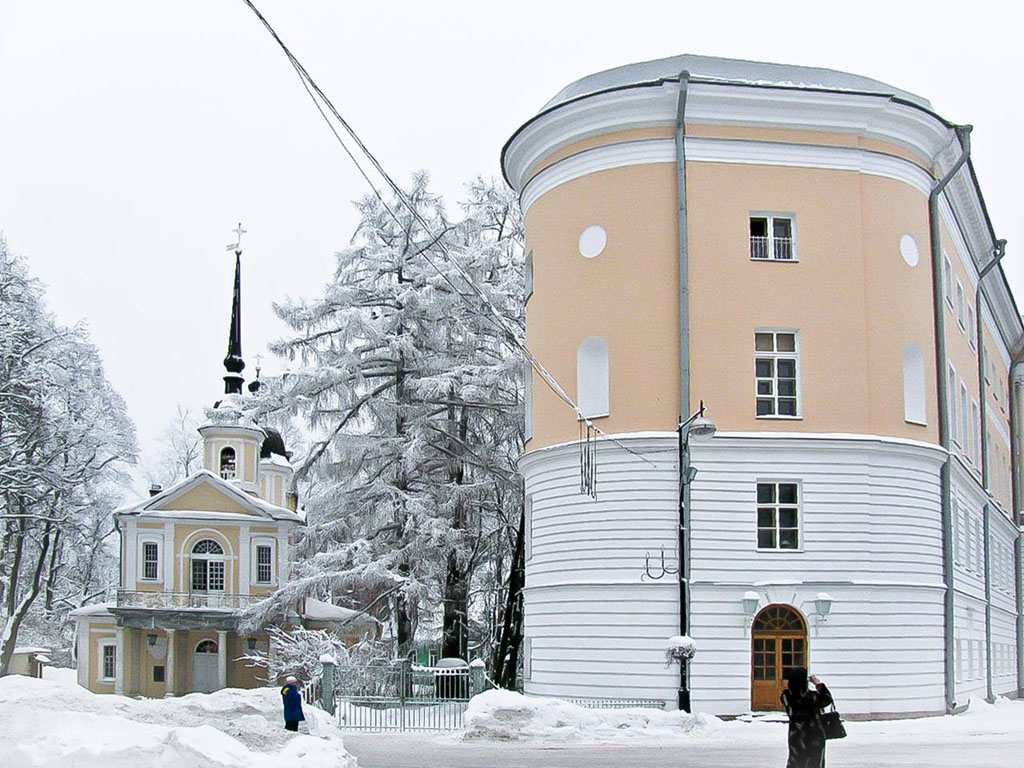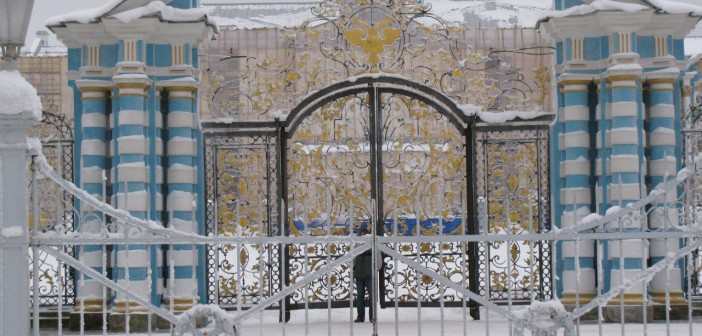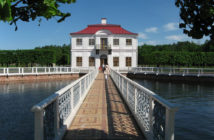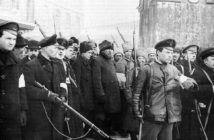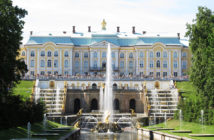Tsarskoe Selo, located 25 km to the South of St. Petersburg, is one of the brilliant country residences which were created by celebrated architects, experts of landscape art, sculptors, and artists.
For two hundred years it belonged to the ruling members of the Russian royal family. In 1917 the property was nationalized; palaces and parks were opened to public. The former mansions of Russian nobility were turned into orphanages and sanatoriums for children.
Named in honor of the poet Pushkin
In 1918 the town was named as Detskoye Selo or Children’s Village. In 1937 it was bestowed the name of Pushkin to mark centenary of his death. In September 1941 the Nazi troops entered the town Pushkin; the occupation lasted till January 1944. It caused an enormous damage to the palaces, museums, and parks of Tsarskoe Selo. The restoration began immediately after the war and is still going on.
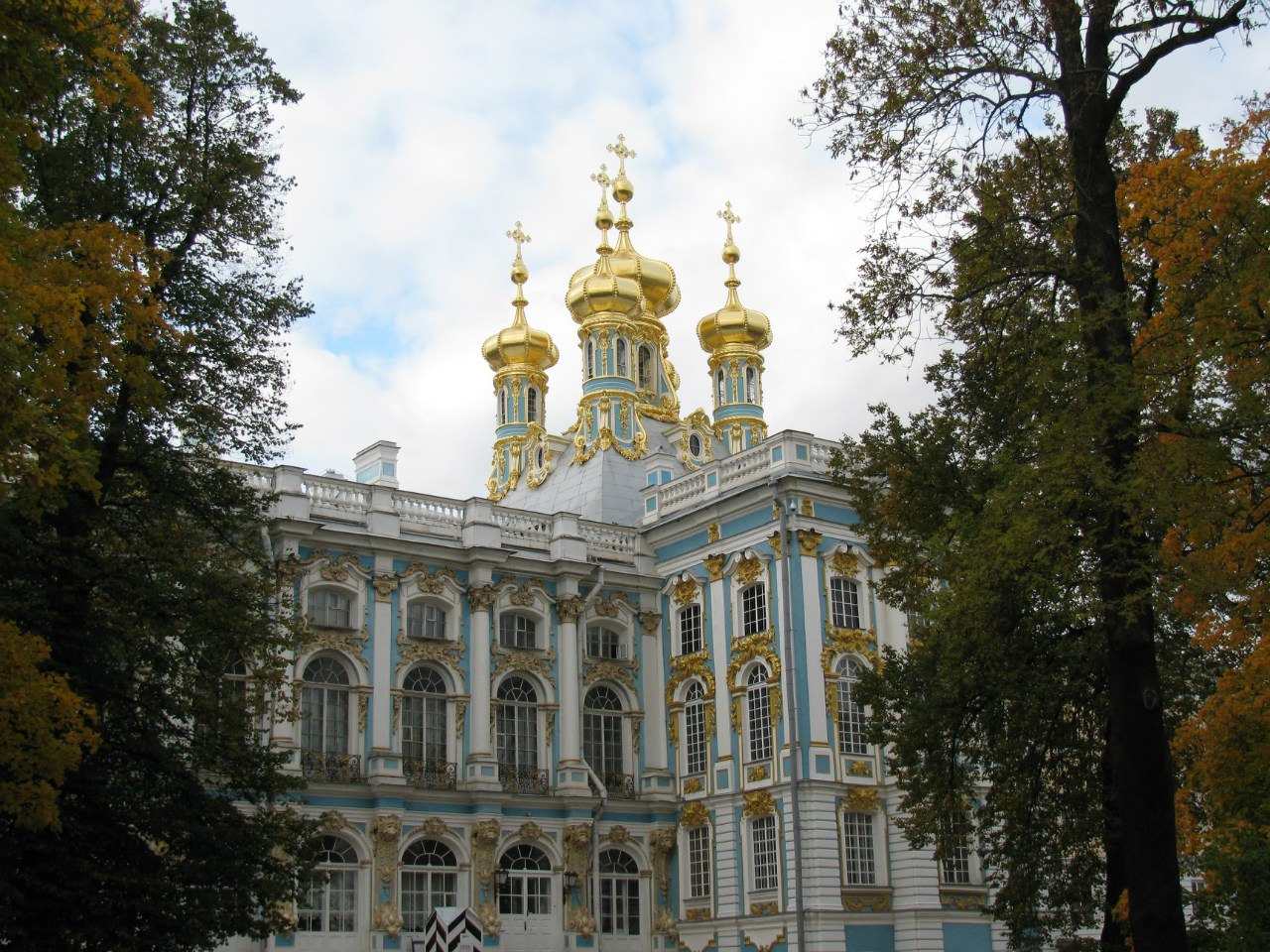
Park ensemble of Tsarskoye Selo
The park ensemble was created by the talented Russian and foreign architects and gardeners of the 18th and 19th centuries. On the area of 100 hectares pavilions, bridges, monuments, exotic structures were built in Baroque, Classical, gothic, Turkish, and Chinese architectural styles.
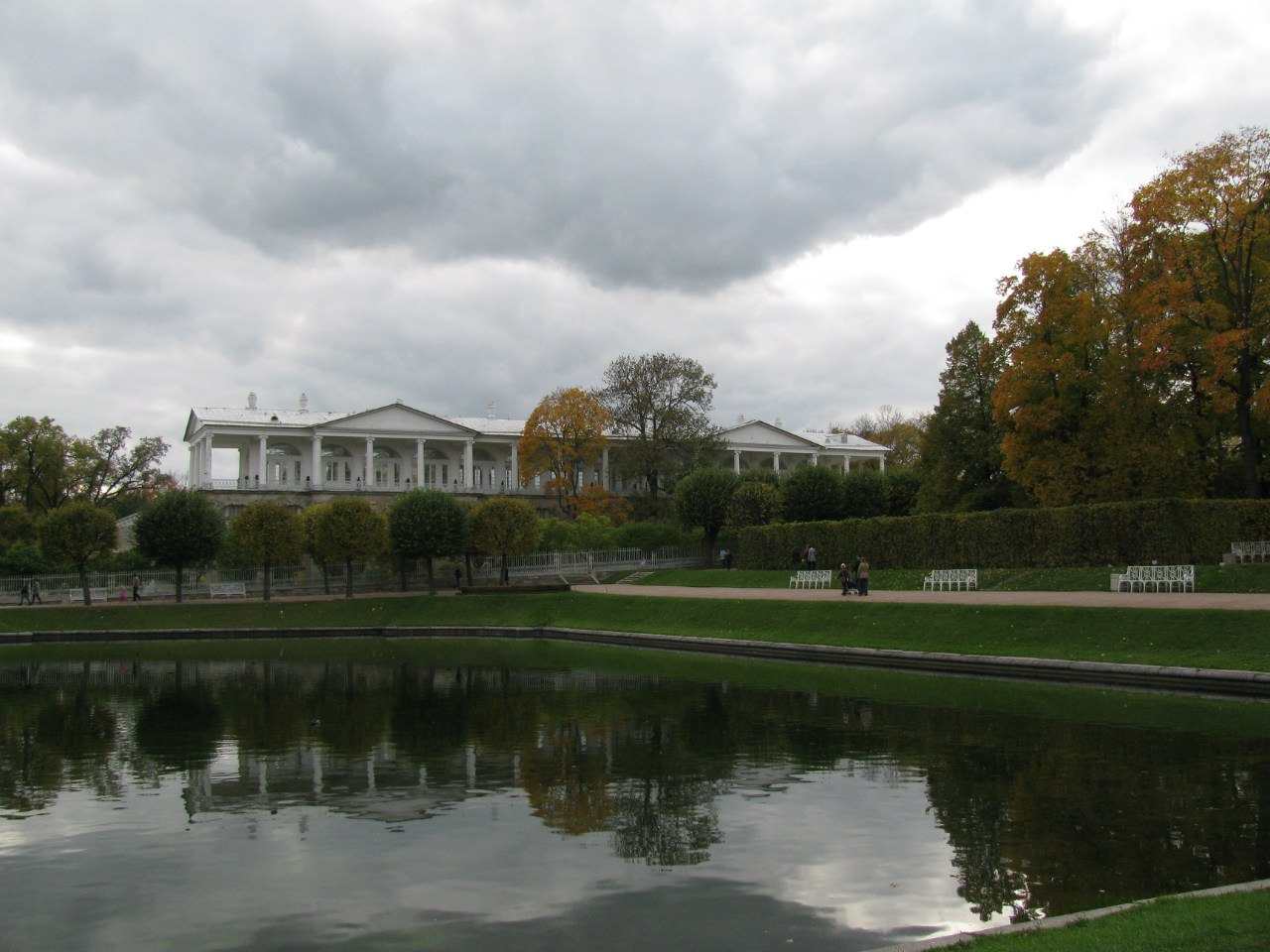
French garden
The regular or French garden was laid in 1720s and enlarged in 1750s. Whimsical combination of symmetrical alleys and paths, artificial ponds, marble sculptures, trimmed bushes and trees were in fashion at that time. The Hermitage and the Grotto Pavilion were built by Rastrelli for Elizabeth I’s receptions and parties.

Changes of the fleet under Catherine II
In 1770s the view of the park was changed as English or landscape garden style became popular. Picturesque groves, rural lawns, shadow alleys appeared. In the time of Catherine II elegant pavilions in classical style were built in the park by the best architects of that time. The Cameron Gallery, the Upper Bath, Lower Bath, the Admiralty by I.Neylov, the Concert Hall by G.Quarenghi was constructed here. In the 19th century the Turkish Bath by I.Monighetti and the Milkmaid Fountain by sculptor P.Sokolov were put up in the park.
